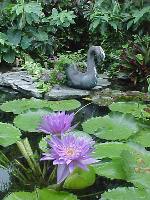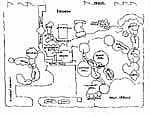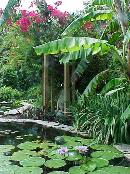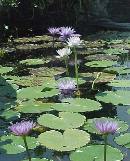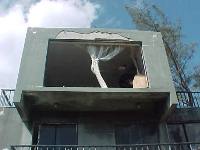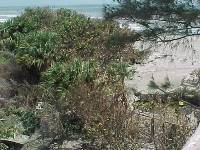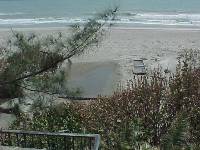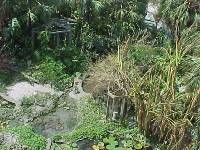|
by Kit Knotts - Click images to enlarge |
|
|
|
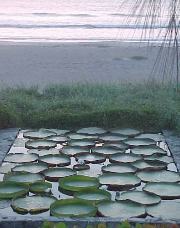 |
| "Paradise" is not a name we gave to our garden. It is rather the result of the reaction of many visitors here -- "This is paradise!" Located directly on the Atlantic Ocean in Cocoa Beach, Florida, the property is an acre and a half, all gradually transformed into a very unusual garden. | ||
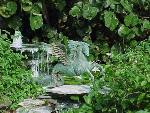 |
I designed and built the house in 1973. It was planned for and constructed within a lovely grove of Australian Pines (Casuarina equestifolia) which were killed by severe freezes in 1984 and 1985. Nature compensated by allowing many seeds to germinate, such as the cabbage palms (Sabal palmetto) and Brazilian peppers (Schinus terebinthifolius) which have become an integral part of the foundation planting. Though the death of the trees was extremely painful, their loss allowed both space and light for the ponds to come. Perimeter foundation plants such as sea grape (Coccoloba uvifera), Carissa grandiflora, Vitex trifolia and Agave were planted from 1973 to 1983. Killed to the ground in 1984, 1985 and 1989, these plants recovered to their former sizes in a few years. Ben and I were married in 1989 and the rest of the garden is all Ben's fault. "Wouldn't it look nice if. . . . ." The garden is nineteen years old or less. There has been no real plan. Each area has dictated what it wanted to be and what wanted to grow there. It is a constantly evolving series of micro-environments. |
|
| Victoria has become a major focus of our interest in aquatics. We have become the primary producer of hybrid and cultivated species seeds which are distributed around the world. We have also created several new cultivars that have proved to be very interesting. We have the unique opportunity to observe the plants almost 24-7 and sometimes year round. |
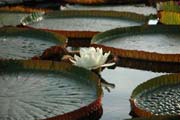 |
|
| Orchids and other exotic tropical plants are other areas of special interest and have their own corner which we call the Magic Garden. "It must be magic because these things shouldn't be able to grow this close to the ocean." Our favorite orchids are the big Spatulata Dendrobiums, though the collection includes many other warm and intermediate growers. We also especially enjoy aroids, gingers, heliconias and ferns. |
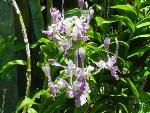 |
|
| We rarely improve the soil which is only slightly better than beach sand. We do water and fertilize regularly and we do the garden work ourselves. We have built all ponds, garden structures and features ourselves and do all the maintenance. | ||
|
|
||
|
|
|
|
|
September 2004 First the fringes of Hurricane Charlie shredded the foliage in the garden. Three weeks later we were struck by the northeast quadrant of Hurricane Frances, pounded by hurricane force winds for more than 24 hours. Damage to the house was relatively small but the garden was buried in sand and debris. We were helped with the digging and dragging out by friends, many from this web site's email discussion list.
|
||
|
Index to galleries of storm damage and the aftermath |
|
2004 Open Garden |
|
|
